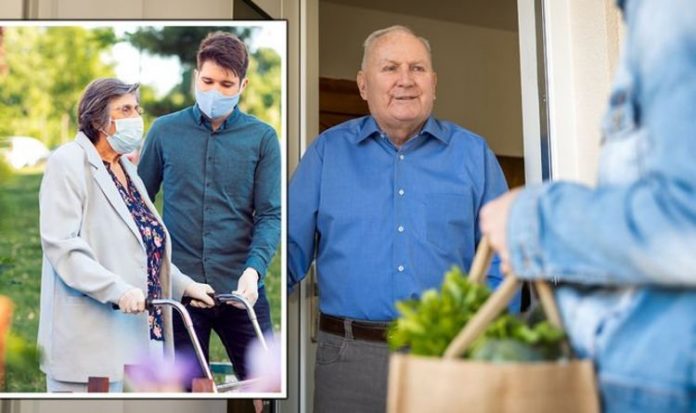While most places in the UK are currently under Tier 1 restrictions, many towns and cities are now being included in Tier 2 as the coronavirus cases continue to rise. Tier 2 restrictions mean you must not socialise with anyone outside of your household – unless they are in your support bubble. But what does this mean?
What is a support bubble?
Under Tier 2 restrictions, you must not meet socially with friends and family indoors “in any setting unless you live with them or have formed a support bubble with them. This includes private homes, and any other indoor venues such as pubs and restaurants”, the Government advice says.
Tier 3 advice reads: “People are banned from socialising with anybody they do not live with, or who are part of a linked household, indoors or in private gardens as well as in most outdoor hospitality venues, including funfairs and fairgrounds.
“Groups of six can still meet outdoors in public places which do not have an entry fee and at outdoor sports grounds or sports facilities, botanical gardens and the grounds of a castle, stately home or historic house.”
A support bubble is where a household consisiting of just one adult joins with another household to form a ‘bubble’.
Households in that support bubble can still visit each other, indoors and outdoors, and can also stay overnight and visit public places together.
You may continue to see friends and family you do not live with outside, including in a garden or other outdoor space under the new restirciotns, however.
But you still must not meet in a group of more than six at any point.
But there are limits to the household mixixng rules in Tiers 2 and 3, however.
The Government advice says that activities, such as indoor exercise classes, can continue – but only if households or support bubbles do not mix.
The restrictions also say: “Where a group includes someone covered by an exception (for example, someone who is working), they are not generally counted as part of the gatherings limit. This means, for example, a tradesperson can go into a household without breaching the limit, if they are there for work.”
How many support bubbles can I have?
You can only form one support bubble. So for example, a couple with two children can form a support bubble with one of their parents who live alone.
However, they cannot then form a separate support bubble with another single parent, friend, or relative.
You can also form a childcare bubble, however, which is where someone in one household provides informal childcare to a child aged 13 or under in another household.
The Government says: “For any given childcare bubble, this must always be between the same 2 households.
“Friends or family who do not live with you and are not part of a support or childcare bubble must not visit your home to help with childcare.
“Childcare bubbles are to be used to provide childcare only, and not for the purposes of different households mixing where they are otherwise not allowed to do so.”
Can I have more than one support bubble?
The Government is clear that you can only have one support bubble.
The Government has also confirmed that seeing a partner who do not live with is allowed outdoors – but social distancing restrictions meant they would not be able to have physical contact.
So if, for example, you have formed a support bubble with a relative who lives alone, you cannot form a second support bubble with your girlfriend or boyfriend.
A spokesman said: “The rules on household mixing in Tier 2 set out that you should mix with your own household only unless you have formed a support bubble and that obviously does apply to some couples,” he said.
The spokesman confirmed couples not in support bubbles and living apart could meet outside but should “follow social distancing and the hand, face, space rules”.
Asked why an exemption for “established relationships” was not written into the law for those in Tiers 2 and 3, he added: “Because the purpose of the measures we’ve put in place is to break the chain of transmission between households and the scientific advice is that there is greatest transmission of the virus indoors.”







